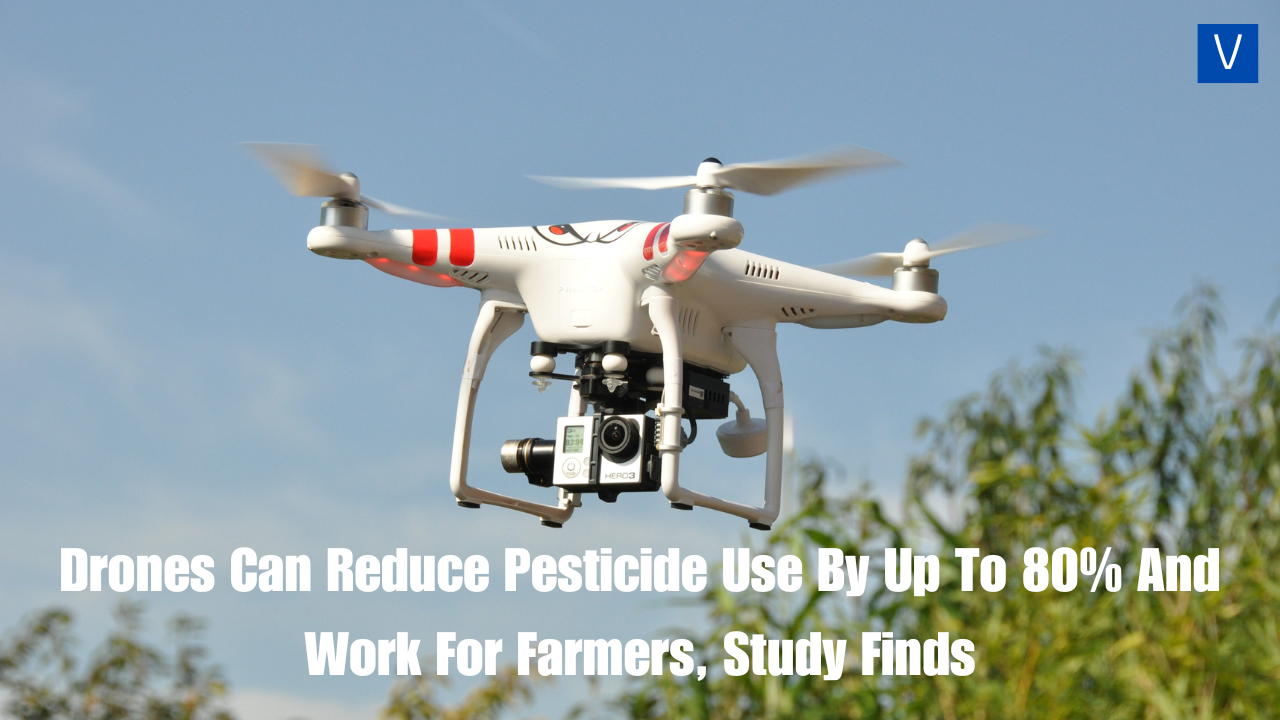A study by the University of Oxford has found that using drones to spray pesticides can reduce the amount of pesticide used by up to 80%. This is because drones can be more precise than traditional methods of pesticide application.
The study, which was published in the journal “Nature Sustainability,” found that drones can be used to spray pesticides directly onto the crops that need them, rather than over spraying the entire field. This can help to reduce the amount of pesticide that is wasted and that can potentially pollute the environment.
The study also found that drones can be used to spray pesticides more quickly and efficiently than traditional methods. This can save farmers time and money, and it can also help to reduce the risk of exposure to pesticides for farmers and other workers.
The study’s findings suggest that drones could be a valuable tool for reducing the use of pesticides in agriculture. However, more research is needed to assess the full potential of this technology.
Drone Technology, Who Invented, And Its Applications
The invention of drone technology is attributed to several people. The first unmanned aerial vehicle (UAV) was invented by Sir George Cayley in 1849. Cayley’s UAV was a glider that was powered by a rubber band.
In the early 1900s, several other people made significant contributions to the development of drone technology. These include:
Alberto Santos-Dumont (Brazil): Santos-Dumont built and flew several UAVs in the early 1900s.
Charles Kettering (US): Kettering developed a UAV that was used for target practice by the US military in World War I.
Igor Sikorsky (Russia): Sikorsky developed a UAV that was used for reconnaissance by the Soviet military in World War II.
 After World War II, there was a renewed interest in drone technology. This was due to the development of new technologies, such as transistors and microprocessors. These technologies made it possible to build smaller, more powerful, and more sophisticated UAVs.
After World War II, there was a renewed interest in drone technology. This was due to the development of new technologies, such as transistors and microprocessors. These technologies made it possible to build smaller, more powerful, and more sophisticated UAVs.
In the 1980s, the US military began to use UAVs extensively. These UAVs were used for a variety of missions, including reconnaissance, surveillance, and target acquisition.
In the 21st century, drone technology has become increasingly accessible to civilians. This has led to a wide range of applications for drones, including agriculture, photography, and delivery.
Components And Working Function Of Drones
A drone, also known as an unmanned aerial vehicle (UAV), is a flying machine that does not have a human pilot on board. Drones are controlled remotely by a human operator or by an onboard computer.
Drones work by using four main components:
- Autopilot: The autopilot is the brain of the drone. It is responsible for controlling the drone’s flight path and ensuring that it stays stable in the air.
- Propulsion system: The propulsion system is what makes the drone fly. It typically consists of one or more motors that spin propellers.
- Flight controller: The flight controller is responsible for receiving signals from the autopilot and sending commands to the propulsion system.
- Sensors: Drones typically have a variety of sensors, such as cameras, GPS, and LiDAR, that help them to navigate and avoid obstacles.
To use a drone, you will need to:
- Choose a drone that is right for your needs. There are many different types of drones available, so it is important to choose one that is suitable for the tasks you want to use it for.
- Learn how to fly the drone. Most drones come with a manual that will teach you how to operate them. You can also find many online tutorials that can help you learn how to fly a drone.
- Get the necessary permits and licenses. In some countries, you may need to obtain a permit or license to fly a drone. Be sure to check the regulations in your area before you start flying.
- Fly the drone safely. When flying a drone, it is important to be aware of your surroundings and to fly safely. Be sure to follow the drone’s safety guidelines and avoid flying in restricted areas.
Drones can be used for a variety of purposes, including:
- Photography and videography: Drones can be used to take aerial photos and videos. This can be useful for capturing stunning landscapes or for inspecting infrastructure.
- Agriculture: Drones can be used to monitor crops, apply pesticides, and spray water. This can help farmers to improve crop yields and reduce costs.
- Delivery: Drones can be used to deliver packages and other items. This is a new and emerging application of drone technology.
- Search and rescue: Drones can be used to search for missing persons or to survey disaster areas.
- Military: Drones are used by the military for a variety of purposes, such as surveillance, reconnaissance, and target acquisition.
Drone technology is rapidly evolving, and new applications for drones are being developed all the time. As drone technology continues to develop, it is likely that we will see even more innovative and exciting uses for these machines in the years to come.
So Far Benefits Of Drones To Farmers
Drones can benefit farmers in a number of ways, including:
- Crop monitoring: Drones can be used to monitor crops for pests, diseases, and other problems. This can help farmers to identify and address problems early, which can help to reduce crop losses.
- Pesticide application: Drones can be used to apply pesticides more precisely than traditional methods. This can help to reduce the amount of pesticide that is used and that can potentially pollute the environment.
- Seeding: Drones can be used to sow seeds more evenly and efficiently than traditional methods. This can help to improve crop yields.
- Weed control: Drones can be used to spot and remove weeds. This can help to improve crop yields and reduce the need for herbicides.
- Data collection: Drones can be used to collect data about crops, such as their height, health, and yield potential. This data can be used to help farmers make better decisions about crop management.
- Overall, drone technology has the potential to be a valuable tool for farmers. It can help them to improve crop yields, reduce costs, and protect the environment. However, more research is needed to fully understand the benefits and risks of drone technology in agriculture.
Conclusion
The study’s lead author, Dr. David Dunn, said that the findings are “very promising” and that drones could “play a major role in reducing the environmental impact of agriculture.” He added that drones are “a new and innovative technology that has the potential to revolutionize the way we farm.”
The study’s findings have been welcomed by environmental groups, who have long called for the use of less harmful pesticides in agriculture. The Environmental Protection Agency (EPA) has also expressed interest in the use of drones for pesticide application and is currently conducting research on the topic.
It is still too early to say how widespread the use of drones for pesticide application will become. However, the study’s findings suggest that drones have the potential to be a major player in the future of agriculture.
Similar News:
